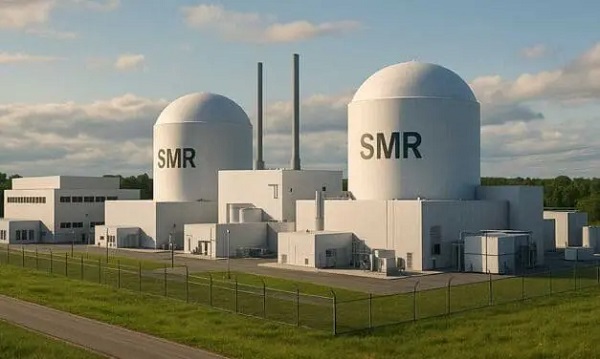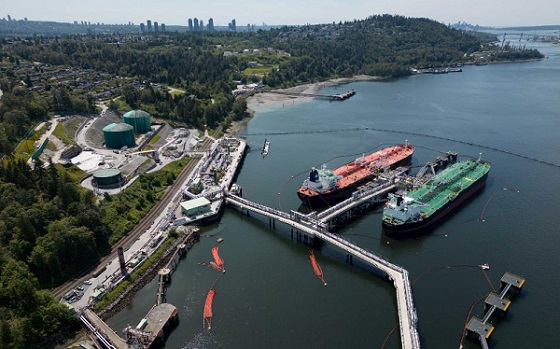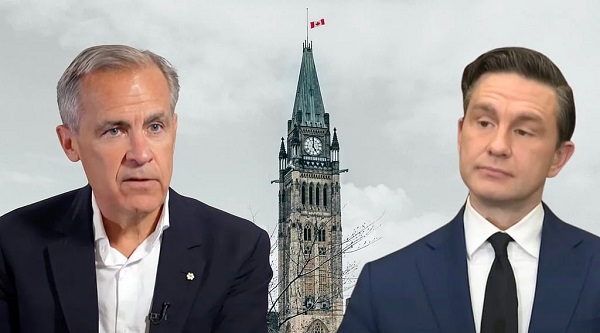Energy
Nuclear power outperforms renewables every time

This article supplied by Troy Media.
Wind and solar work in small niches, but nuclear remains the only reliable, cost-effective choice for large-scale electricity
Last month, Prime Minister Mark Carney unveiled a shortlist of major Canadian infrastructure projects. At the top: a small modular reactor (SMR) at Ontario’s Darlington nuclear site. Designed to power 300,000 homes, the project may make Canada the first G7 nation with operational SMRs —and it marks a quiet turning point in the clean energy debate.
It’s a timely reminder that while wind and solar dominate headlines, nuclear remains the only scalable low-emissions solution ready to anchor the grid.
As someone who spent decades working on 13 nuclear reactor projects across Canada and abroad—and 40 years living off-grid on a sailboat powered by solar panels and microturbines—I support renewables for small-scale use. But based on professional and personal experience, I can say confidently that nuclear is the better fit for our large-scale energy needs.
Many renewable advocates compare technologies using nameplate capacity—maximum output under ideal conditions. But what matters is how much electricity each generator actually delivers under real-world conditions, especially in places like Alberta.
A typical Canadian home consumes about 35 kilowatt hours of electricity annually. A 100- megawatt nuclear plant operating year-round produces 876 million kWh per year. In comparison, wind farms in Alberta operate at about 32 per cent efficiency, delivering only 280 million kWh per year. Solar farms fare worse, averaging just 17 per cent efficiency annually, with output dropping close to zero in the winter. A 100 MW solar farm produces around 149 million kWh per year. While performance
may vary in other regions, the broader issues—intermittency and short lifespans—remain consistent.
Lifespan is a critical factor. A nuclear plant, with refurbishment, can last around 60 years. Wind turbines and solar panels typically last about 20 years and degrade by two to three per cent each year. Unlike nuclear, they can’t be economically refurbished. That means triple the renewable infrastructure is required over time to deliver the same output.
Measured over their full lifecycle, nuclear plants produce electricity more cost-effectively than many assume. High up-front costs and long construction periods can inflate financing charges, but modular construction of SMRs—factory-built in sections and assembled on site—will cut those interest costs significantly. Ontario’s older CANDU reactors already deliver electricity at 10.1 cents per kilowatt hour—less than natural gas (11.3), wind (15.4), or solar (50.2), and only slightly higher than hydro (6.1). These figures exclude subsidies.
Modern SMRs also address concerns around radioactive waste. Some designs use thorium, a safer alternative to uranium that doesn’t produce long-lived waste. Others recycle spent uranium fuel repeatedly until it’s depleted. Moltex Energy, based in New Brunswick, is developing technology to recycle spent CANDU fuel until it is fully depleted. In time, we may no longer need to store used fuel at all.
SMRs also offer safety and deployment advantages. Many rely on passive controls and require no on-site operators. They’re compact enough to be delivered by truck, avoiding years-long construction delays and enabling faster integration into the grid.
Wind and solar remain fundamentally intermittent. That’s because electricity grids require a constant, stable supply. If the wind dies down or clouds roll in, another source must take over immediately to prevent blackouts. This need for backup—usually with natural gas turbines—means double the infrastructure and double the cost.
The market is responding to the failure of renewables to deliver reliable power. Countries investing in nuclear are thriving. Others—like Germany—face deindustrialization, with energy prices up to four times higher than before. According to online news outlet Brussels Morning, more than 1,100 renewable projects have been rejected in Europe. Investor confidence in renewables is slipping.
All of this points to a simple truth.
Renewables have their place—but not as the backbone of our electricity grid. For reliable, industrial-scale power that keeps homes, hospitals and industries running, only nuclear can deliver.
Cosmos Voutsinos is a retired engineer who has published multiple scientific papers that have garnered a total of 96 citations. He earned his Bachelor of Applied Science (BASc) at the University of Waterloo and his Master of Engineering (M.Eng) degree from McMaster University.
Troy Media empowers Canadian community news outlets by providing independent, insightful analysis and commentary. Our mission is to support local media in helping Canadians stay informed and engaged by delivering reliable content that strengthens community connections and deepens understanding across the country.
Energy
Expanding Canadian energy production could help lower global emissions

From the Fraser Institute
By Annika Segelhorst and Elmira Aliakbari
Canada’s most timely opportunity to lower overall global emissions is through expanded exports to regions that rely on higher-emitting fuel sources.
The COP30 climate conference in Brazil is winding down, after more than a week of discussions about environmental policy and climate change. Domestic oil and natural gas production is frequently seen as a fundamental obstacle to Canada’s climate goals. Yet the data shows that Canadian energy production is already among the world’s cleanest, generating lower greenhouse gas (GHG) emissions per barrel-of-oil-equivalent produced, among major producing countries. Expanding the role of Canadian oil and gas in global markets can replace higher GHG-emitting alternatives around the world, driving down global GHG emissions.
Prime Minister Carney’s first budget highlights Canada’s “emissions advantage” in a chart on page 105 that compares the amount of GHG emissions released from producing oil and natural gas across 20 major producing countries. Compared to many other top-producing countries, Canada releases fewer GHG emissions per barrel of oil and gas produced when considering all phases of production (extraction, processing, transport, venting and flaring).
For oil production, Canada has an advantage over most major producers such as Venezuela, Libya, Iran, Algeria, Nigeria, China, Russia and Qatar. Canada’s emissions per barrel of oil produced are below the global average, making Canada among the lower emitting producers worldwide.
Similarly, Canada’s natural gas production has an emissions per barrel equivalent that is lower than the global average and is below major producers such as Turkmenistan, Uzbekistan, Nigeria, Indonesia, China, Argentina, Malaysia, Australia, Algeria, Iran, Russia, India and the United States. The chart below reveals countrywide average GHG emissions per barrel of oil or natural gas produced in 2022.
Source: International Energy Agency (2023), The Oil and Gas Industry in Net Zero Transitions 2023, IEA, Paris, p. 69
Canada’s emissions advantage stems from years of technological innovations that require less energy to produce each barrel of oil along with improvements in detecting leaks. From 1990 to 2023, Canada’s total production of crude oil rose by 199 per cent, while emissions per barrel of oil produced declined by 8 per cent, according to Environment and Climate Change Canada (ECCC). In the oilsands, since 1990 emissions per barrel have fallen by nearly 40 per cent while emissions from natural gas production and processing have decreased by 23 per cent.
Canada has already implemented many of the most practical and straightforward methods for reducing carbon emissions during oil and gas production, like mitigation of methane emissions. These low-hanging fruits, the easiest and most cost-effective ways to reduce emissions, have already been implemented. The remaining strategies to reduce GHG emissions for Canadian oil and gas production will be increasingly expensive and will take longer to implement. One such approach is carbon capture, utilization, and storage (CCUS), a technology which traps and stores carbon dioxide to prevent it from reaching the atmosphere. Major infrastructure projects like this offer potential but will be difficult, costly and resource intensive to implement.
Rather than focusing on increasingly expensive emission reductions at home, Canada’s most timely opportunity to lower overall global emissions is through expanded exports to regions that rely on higher-emitting fuel sources. Under a scenario of expanded Canadian production, countries that presently rely on oil and gas from higher-emitting producers can instead source energy from Canada, resulting in a net reduction in global emissions. Conversely, if Canada were to stagnate or even retreat from the world market for oil and gas, higher-emitting producers would increase exports to accommodate the gap, leading to higher overall emissions.
As Canada’s climate and energy policy continues to evolve, our attention should focus on global impact rather than solely on domestic emissions reductions. The highest environmental impact will come from enabling global consumption to shift towards lower-emitting Canadian sources.
Energy
Here’s what they don’t tell you about BC’s tanker ban

From Resource Works
By Tom Fletcher
Crude oil tankers have sailed and docked on the British Columbia coast for more than 70 years, with no spills
BC Premier David Eby staged a big media event on Nov. 6 to once again restate his opposition to an oil pipeline from Alberta to the Prince Rupert area.
The elaborate ceremony to sign a poster-sized document called the “North Coast Protection Declaration” was dutifully covered by provincial and national media, despite having no actual news content. It is not a response to Alberta’s plan to finance preliminary work on a new oil pipeline, Eby insisted. It’s to confirm the direction of growing the BC economy without, you know, any more oil pipelines.
The event at the opulent Vancouver Convention Centre West was timed to coincide with the annual BC Cabinet and First Nations Leaders Gathering, a diplomatic effort set up 10 years ago by former premier Christy Clark. This year’s event featured more than 1,300 delegates from 200 First Nations and every BC government ministry.
A high-profile event with little real news
The two-day gathering features 1,300 meetings, “plus plenary and discussion sessions on a variety of topics, including major projects, responding to racism, implementation of the Declaration Act, and more,” the premier’s office announced.
Everyone’s taxpayer-funded hotels and expense accounts alone are an impressive boost to the economy. Aside from an opening news conference and the declaration event at the end, the whole thing is closed to the public.
The protection declaration is a partnership between the BC government and the Coastal First Nations, Eby said. As I mentioned in my Oct. 15 commentary, Coastal First Nations sounds like a tribal council, but it isn’t. It’s an environmental group started in the late 1990s by the David Suzuki Foundation, with international eco-foundation funding over the years that led to the current name, Coastal First Nations Great Bear Initiative.
The evolution of the Coastal First Nations initiative
Their current project is the Great Bear Sea, funded by $200 million from the federal government, $60 million from BC, and $75 million from “philanthropic investors.” This is similar to the Great Bear Rainforest conservation project, backed by mostly US billionaire charity funds, that persuaded Justin Trudeau to turn the voluntary tanker exclusion zone into Canadian law.
Leadoff speaker in Vancouver was the current Coastal First Nations president, Heiltsuk Chief Marilyn Slett. She repeated a well-worn story about her remote Central Coast community of Bella Bella still struggling with the effects of an “oil spill” in 2016.
In fact, the 2016 event was the sinking of a tugboat that ran aground while pushing an empty fuel barge back down from Alaska to a refinery in Washington to be refilled. The “oil spill” was the diesel fuel powering the tugboat, which basic chemistry suggests would have evaporated long ago.
Fuel dependence on the remote BC coast
Remote coastal settlements are entirely dependent on fuel shipments, and Bella Bella is no different. It has no road or power grid connections, and the little seaside village is dominated by large fuel tanks that have to be refilled regularly by barge to keep the lights on.

Alaska North Slope crude has been shipped by tanker to Washington and beyond for more than 60 years. Yes, there’s a North Coast “exclusion zone” where US-bound tankers go west around Haida Gwaii rather than down the Inside Passage, but once the ships reach Vancouver Island, they sail inside right past Victoria to refineries at Cherry Point, March Point, and other US stops.
Through the tall windows of the Vancouver convention centre, you can watch Aframax crude tankers sail past under the Second Narrows and Lions Gate bridges, after loading diluted bitumen crude from the expanded Westridge Terminal in Burnaby. That is, of course, the west end of the Trans Mountain Pipeline, which has operated since 1954 with no spills, including the branch line down to the Cherry Point complex.
There are many more crude tankers exiting Vancouver now that the TMX expansion is complete, but they aren’t filled all the way because the Second Narrows is too shallow to allow that. A dredging project is in the works to allow Aframax-sized tankers to fill up.
A global market for Alberta crude emerges
They enter and exit Burrard Inlet surrounded by tethered tugboats to prevent grounding, even if the tanker loses power in this brief stretch of a long voyage that now takes Alberta crude around the world. Since the TMX expansion, shipments that used to go mostly to California now are reaching Korea, Japan, China, Hong Kong, and Singapore as well.
The US captive discount has shrunk, the tripled pipeline capacity is rapidly filling up, and pumping stations are being added. This is the very definition of Mark Carney’s nation-building projects to get Canada out of the red.
The idea that the North Coast can host fuel barges, LNG tankers, bunker-fired cruise ships, and freighters but can’t tolerate Canadian crude along with the US tankers is a silly urban myth.
Tom Fletcher has covered BC politics and business as a journalist since 1984. [email protected]. X: @tomfletcherbc
-

 National1 day ago
National1 day agoPsyop-Style Campaign That Delivered Mark Carney’s Win May Extend Into Floor-Crossing Gambits and Shape China–Canada–US–Mexico Relations
-

 Great Reset19 hours ago
Great Reset19 hours agoEXCLUSIVE: The Nova Scotia RCMP Veterans’ Association IS TARGETING VETERANS with Euthanasia
-

 COVID-191 day ago
COVID-191 day agoCovid Cover-Ups: Excess Deaths, Vaccine Harms, and Coordinated Censorship
-

 Alberta2 days ago
Alberta2 days agoAlberta to protect three pro-family laws by invoking notwithstanding clause
-

 Health1 day ago
Health1 day agoCDC’s Autism Reversal: Inside the Collapse of a 25‑Year Public Health Narrative
-

 Bruce Dowbiggin1 day ago
Bruce Dowbiggin1 day agoBurying Poilievre Is Job One In Carney’s Ottawa
-

 Alberta2 days ago
Alberta2 days ago‘Weird and wonderful’ wells are boosting oil production in Alberta and Saskatchewan
-

 Daily Caller20 hours ago
Daily Caller20 hours agoSpreading Sedition? Media Defends Democrats Calling On Soldiers And Officers To Defy Chain Of Command








